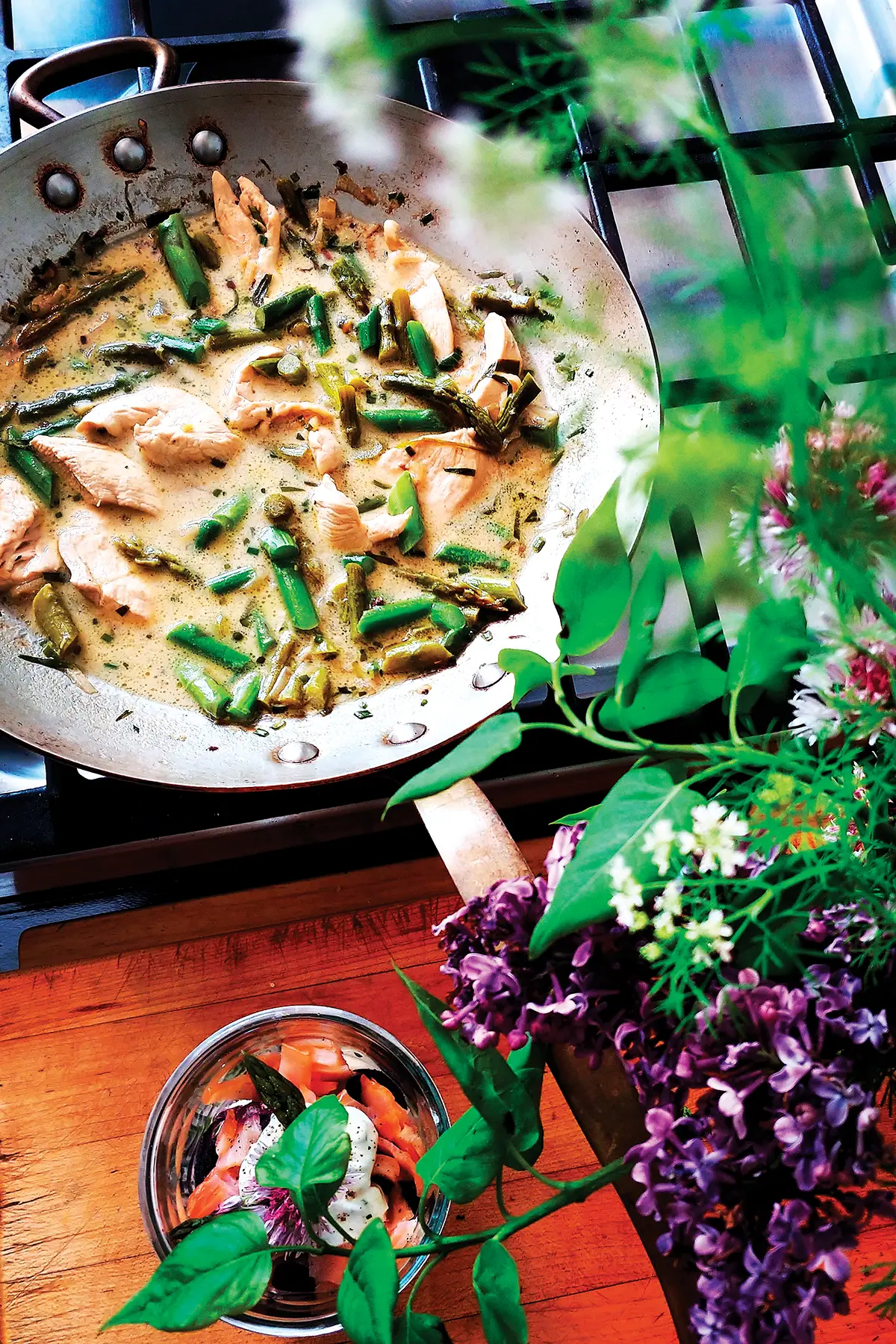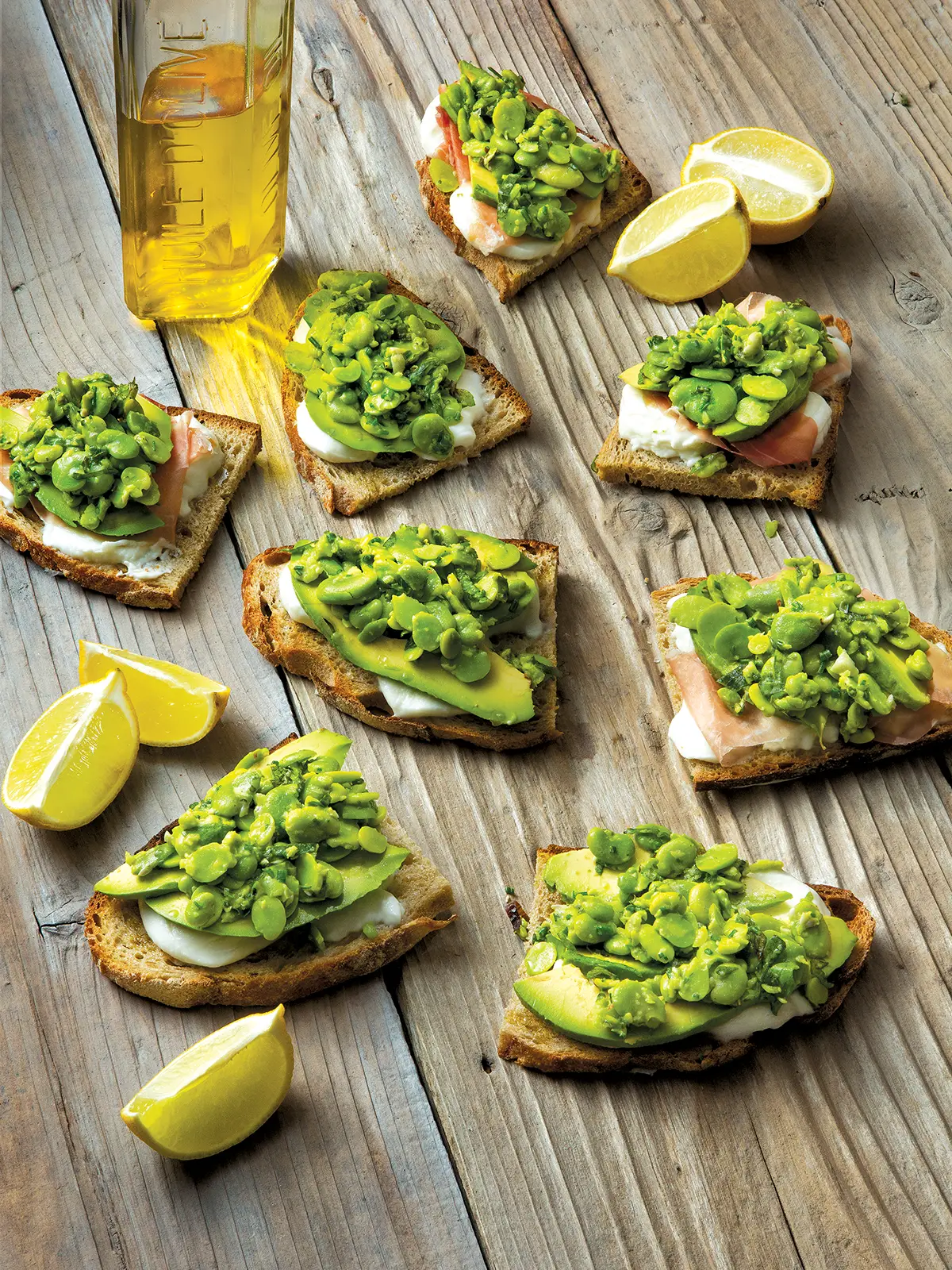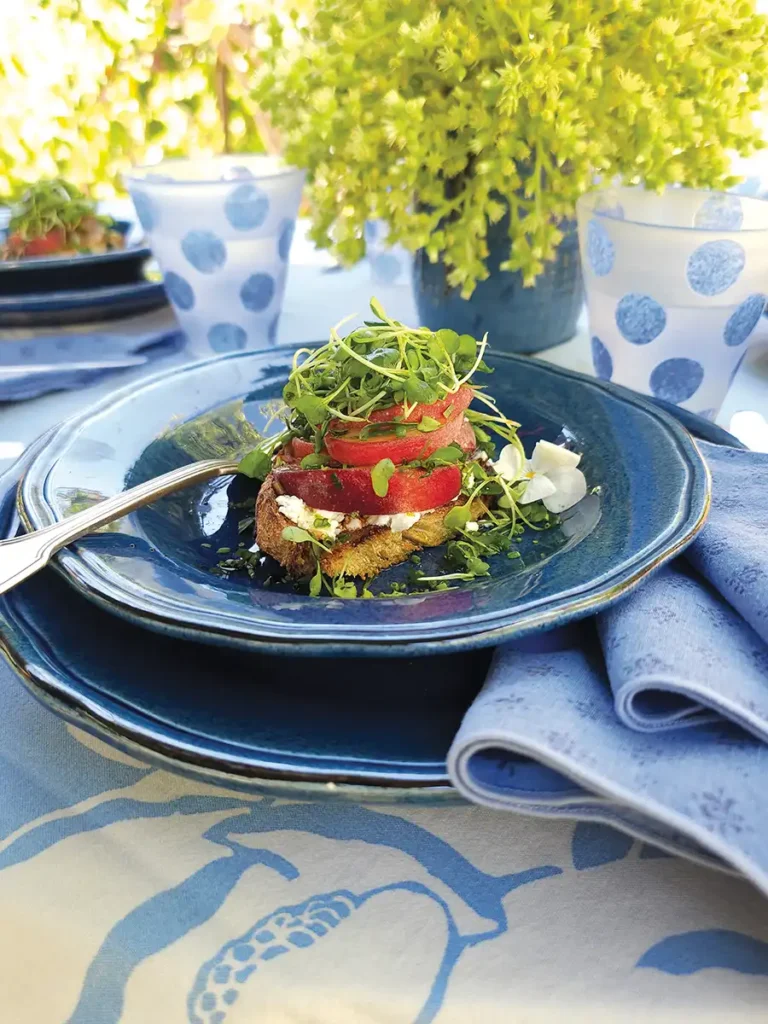Rejuvenation: A Spring Sensation
“The beautiful spring came; and when Nature resumes her loveliness, the human soul is apt to revive also.”
—Harriet Ann Jacobs

This past winter, as root vegetables grew safely encased in their earthy robes, cozy and nourished by the soil that surrounded them, we too were bundled up in sweaters and coats, sloshing around in gumboots, dealing with the endless rain.
However, after months of potatoes, celery root, carrots, parsnips, soups, stews, apples, pears and all things rib-sticking, I longed for something fresh, crisp, green and invigorating. Almost as though Mother Nature sensed this longing, the farmers’ f ields exploded with an edible profusion of all things crunchy, bright and revitalizing. It was a sign—along with daffodils, the f irst tulips, gurgling streams and grass-covered mountains the color of a Granny Smith apple—that spring was here.
Spying mounds of just-picked asparagus at the market is a true harbinger of the new season. With it come large bunches of freshly picked herbs, spring peas delicate enough to eat raw, English peas, plump fava bean pods with their bright green gems tucked inside their velvety cases, and the sweet seductive scent of ripe strawberries. I often get carried away during these first visits to the spring markets and come home with baskets laden with a profusion of greenery, making salads galore and trying new pesto recipes that have been dancing in the corners of my imagination. Inhaling the aroma of freshly blitzed greens and munching on raw asparagus stalks is a rejuvenating tonic for the senses.
When I was growing up, asparagus spears were a luxury item. I have no memory of ever eating them in England when I was small, but rather discovered them in France at my grandmother’s table, and even then they were a rare treat. She would steam them and serve them warm with a light, mustardy vinaigrette with a sprinkling of freshly chopped chives from her garden. This is still one of my favorite ways to eat them. In my later teens, traveling around Europe, in Italy and Austria I discovered the pleasures of white asparagus: fat, juicy, slightly bitter and herbaceous. Served with hollandaise or simple melted butter they were the crème de la crème.
There are few farmers that grow the white variety locally as they are so labor intensive and therefore expensive to produce. So when I do find some, I’ll rush to make a green and white asparagus tart or multicolored shaved asparagus salad. When abundant spring rains produce a fresh sprouting of wild mushrooms (as they did this year) local foragers harvest chanterelles to bring to the markets. If I find them both I’ll jump at the chance to make a sautéed mushroom and asparagus salad, a spring risotto with glistening golden mushroom slices and al dente asparagus tips mixed into the creamy cheesy rice or served with poached chicken in a light mustard and crème fraîche sauce, a dish inspired by my late grandmother. These dishes are just the overture of the season, with the full symphony of spring produce yet to come. All this greenery gets my cooking juices flowing. I keep returning to the market to see what the new season brings next: When will apricots and cherries arrive, or fava beans?
I’m fortunate to have a number of friends with very green thumbs, and who like to share their abundant bounty. Last year, when I happened to mention that I loved fava beans, I came home one day to find an enormous box by my front door. It was overflowing with pounds and pounds of favas. I was a little dazed by the quantity and set about shucking them out of their pods, as I thought about what to make with them. Adding them to the aforementioned risotto came to mind, as did a spring tart with peas, favas and goat cheese, but I had a sudden craving for an avocado toast type dish, so made a fava bean smash—a truly luscious chunky mash of favas with lots of herbs, olive oil and lemon juice, inspired by the Egyptian dish Ful Medames. It’s so versatile you could eat this for breakfast, lunch and dinner (and I did), serving it on toast, in a salad or as a side dish.
Spring is also a time for juicy fruit; think of plump cherries and all the multihued nectarines, apricots, pluots and plums. It’s also strawberry season. They are among the first of the season’s fruit to ripen after the cool winter months. According to the Seneca people (and other Iroquois nations), the rising of the Strawberry Moon—on June 3 this year—heralds a sacred time.
The strawberry is a fruit that represents rebirth and hope. Long associated symbolically and in mythology with love, birth and fertility, the Seneca hold an annual strawberry festival, the highlight of which is the sharing of a specially prepared strawberry juice, traditionally made with wild berries picked on the day of the strawberry moon mixed with maple syrup and water. As each person drinks the juice—thought to have restorative and invigorating properties because of the berries’ heart shape—they give thanks to the Great Spirit for all the blessings they received and for surviving the winter.
In Jane Eyre, Charlotte Brontë wrote, “Spring drew on… and a greenness grew over those brown beds, which, freshening daily, suggested the thought that Hope traversed them at night, and left each morning brighter traces of her steps.”
I like to think that as the earth warms through the early spring days, its first gift is a blossoming of gorgeous berries. Good strawberries, red to their core, are sweet, juicy and ambrosial. Wild strawberries have a particularly special floral aroma and taste. Biting into a perfect strawberry is joyous sensation with a hint of tang and deeply satisfying fruity notes that linger on the tongue. Anyone who has tasted a bland berry with lackluster taste and pale flesh knows how disappointing this can be. Our patience is rewarded, for as the fruit ripen they release their tantalizing scent; this is the time to delve into a plethora of strawberry inspired dishes, and to be invigorated by the fecundity of the all the season’s treats.









